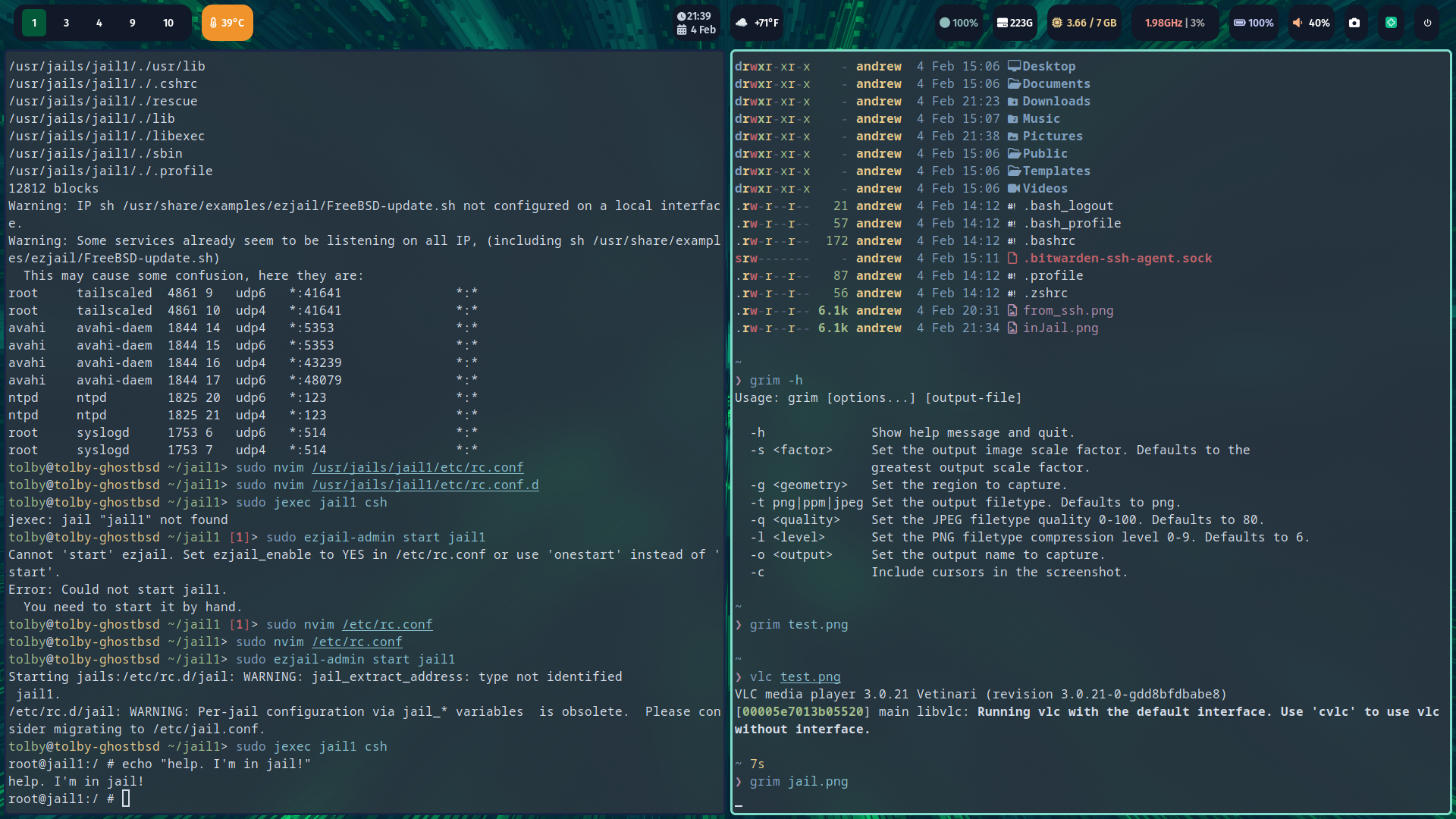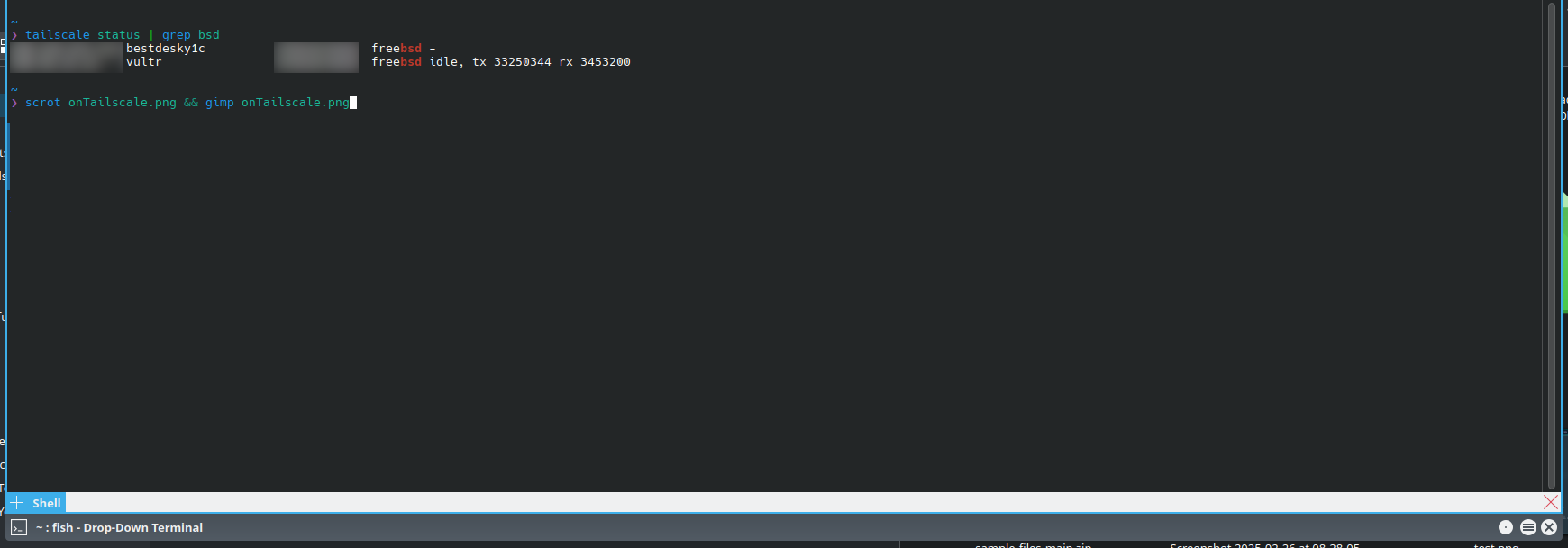5 minutes
The Bsd Challenge
My Attempt at the BSD Challenge
Woops
Apparently, Ghost BSD isn’t allowed. I reject this reality.
Section 1: Relentless Waffling (you should skip this section if you have a life to live)
I was 19 years old when I first heard of BSD. At the time, I was an Airman training with the Army at Ft. Leonard Wood’s engineering program and had a serious case of self-imposed insomnia. I’m not going to dig into why this insomnia was happening (cough cough underage drinking cough cough), but I found myself sitting in the barraks at 2 AM surrounded by sleeping Airmen, incapable of making myself lay down and looking for something to take my attention now that everyone else was unconcious. Being the nerdy teenager that I was at the time, one of my main interests was computing, specifically Microsoft’s Photosynth, a program that would take a collection of images of something from different angles, then stitch them together into a 3d map that could be walked through and explored. Of course, Microsoft being Microsoft, it was dropped a few years later and all of the data was deleted. Those memories being destroyed was an influential moment that led me down the road of becoming a self-hosting free software nut.
But I digress.
On that particular night, I found myself sitting in the fire escape of my building at Blanchard Barraks on a cheap laptop that I’d been planning to nuke’n pave for awhile. I’d heard about this Linux thing and wanted to give it a shot, but I wanted to make sure there wasn’t anything else out there that I’d want to install, so I looked up lists of OSes and landed on this awesome old page.
I never installed anything listed there, mainly because I wanted something that could actually be used to do things that weren’t bragging about my alternative-os e-peen around niche forums that aren’t around anymore, but the first line caught my attention.
This post is about the desktop operating systems that fly under the radar of most people. We are definitely not talking about Windows, Mac OS X or Linux, or even BSD or Solaris. There are much less mainstream options out there for the OS-curious.
BSD? What is BSD? The rest of that night was spent bouncing from one website to another, educating myself on this wild new world that I’d happened upon.
I never installed BSD that year, or the next, or the next. It wasn’t until 2015 that I picked back up my interest in the One True Unix(™). I’d been listening to the Jupiter Broadcasting network’s shows for a few years at this point, probably since 2012 or so, and one of their shows was called BSD Now. I started listening to that show around that time and found myself drawn in by what the hosts kept promoting as the advantages of the OS.
In parallel with me beginning to listen to that show, Digital Ocean, one of Jupiter Broadcasting’s sponsors, started offering Free BSD as an OS on their virtual servers that they rented out. I was deploying soon and wanted something to set up that I could use to self-host stuff close by, but that wouldn’t be insecure. Free BSD seemed perfect for that. I was enamored with it from the start. Compared to everything I’d used up to that point, Free BSD was simple and straightforward. There wasn’t service X that monitored application Y so that daemon Z could manage program λ. You just ran λ and everything else was up to you. That’s the kind of simplicity that I want out of everything in life. Why have a self-driving car that forces you to watch ads before you can accelerate when you can just use the petal on a completely normal car? I hear I’m abnormal in that sense, but if Ron Possible taught me anything, it’s that being normal is for losers.
The Challenge
Despite my love for the OS, I’ve only ever occasionally used it. Regardless, I found myself exited when Jupiter Broadcasting issued their BSD challenge on episode 600 of the Linux Unplugged program almost a decade after the deployment where I first found my excuse to run Free BSD. The rules were pretty simple, and most of them were things that I’ve already done.
Initial Targets (two points each)
- ☑ Install BSD and get it online. (Win by default. Ghost BSD)
- ☑ Record audio of you from a working desktop. (Taken one step further by recording video and audio)
- ☑ Get one “server or service” running, accessible from the LAN. (You’re looking at that right now)
Six points right out of the gate.
Bonus Targets (5 points each)
- ☑ Get an app running inside Podman or Jails (See attached image)

- ❌ Install and configure a firewall (Fail. No points)
- ☑ Get Tailscale working on a BSD system (EZ PZ)

- ❌ Try out two BSDs (I mean, I did a long time ago. Zero points now, though.)
- ❌ Nix BSD (No points. Ran out of time)
- ❌ Get a non-BSD native video game running. (Zero points. No GPU)
All told, I got 16 points. It’s a pittance compared to what some in the JB community got, but the points don’t really matter. What really matters is that people are getting started with BSDs in a world that has been completely dominated by Linux for some time now. It also got me off my ass and got me hosting something of (I hope) value; something that you’re reading right now.
925 Words
2025-02-22 15:12